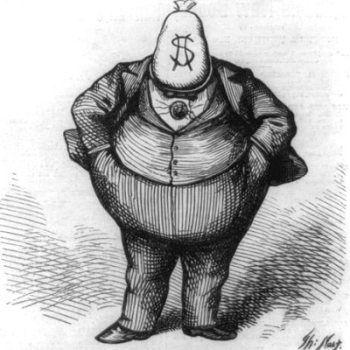The problem with Chesterton’s Fence as an interpretive guide to conservatism is that it turns out to be neither descriptively accurate nor predictively useful.
If this “one plain and simple principle” were really a good summary of conservative ideology or of conservative habits of mind, then we would expect the behavior of conservatives to align with it. We would expect that it would enrich and inform our understanding of what conservatives are doing and why they are doing it. And we would find it a useful and reliable guide to shape our expectations of how conservatives will behave in the future.
But it does not prove to be useful or reliable for any of that. The fence, remember, is a proxy for institutions and laws. And it is true that sometimes conservatives seem to be in the business of conserving the legacy of institutions and laws we have inherited from our ancestors, our parents, and our grandparents. But it is just as true that these same conservatives are sometimes eager to tear down existing “fences,” laws, and institutions, without any reference to or consideration of the original purpose or use of them. And it’s also true that sometimes these same conservatives are busy constructing brand new, unprecedented fences, laws, and institutions.

“Conservatives conserve” turns out not to be either descriptively accurate or predictively useful. If we want to understand conservatism and conservatives, we need some guiding principle that more consistently applies to them and one that seems more consistently applied by them.
And here, as I said, is where I turn to an unlikely source for the articulation of just such a principle — a post in the comment section of a blog last year. This is from Frank Wilhoit. Who is that? Well, he’s a composer of classical music and somebody who reads and sometimes comments at Crooked Timber. Beyond that, I don’t really know and we don’t really need to know. What concerns us here is not whether he has the credentials or rank or authority to qualify for our attention. All that really matters is whether or not what he said is true — whether or not it corresponds to reality as we are best able to observe and ascertain it. (If you’re still terribly worried about who Wilhoit is, you can read this recent Twitter thread, or you can head over to the comment section at Crooked Timber and probably ask him yourself.)
Here is what Wilhoit wrote:
Conservatism consists of exactly one proposition, to wit:
There must be in-groups whom the law protects but does not bind, alongside out-groups whom the law binds but does not protect.
There is nothing more or else to it, and there never has been, in any place or time.
… As the core proposition of conservatism is indefensible if stated baldly, it has always been surrounded by an elaborate backwash of pseudophilosophy, amounting over time to millions of pages.
I first read that some months ago and moved on, scrolling past the way I usually do after encountering such sweeping claims. It also rankled a bit because it strayed from the general rule I try to follow of, whenever possible, describing others’ views in terms that they themselves would agree to use.*
But the core of that stuck with me: “There must be in-groups whom the law protects but does not bind, alongside out-groups whom the law binds but does not protect.”
I was unable to shake it because it so precisely articulated what I was seeing. As a description of conservatism and of the behavior and agenda of conservatives, it proved to be unfailingly accurate.
And as a predictor of conservative actions and responses it proved to be remarkably specific and reliable. Like, Marty McFly’s Sports Almanac from-the-future specific and reliable.
It is a theory, in other words, that has the benefit of being consistently confirmed by everything I’ve seen since I first saw it posited. And it is a theory that invites further confirmation by predicting future behavior.
The principle also helps to clarify something that otherwise trips us up: the supposed “hypocrisy” of conservatives and conservatism. Merrick Garland, Stormy Daniels, “closed hearings” — we’re beset by a steady stream of such apparent hypocrisy and countless examples of conservative willingness to betray their purported core principles. But when conservatives are confronted with such evident hypocrisies they seem confused by the accusation.
I think their confusion is genuine. They are not hypocrites. If Wilhoit’s principle is true — and I think it is — then their behavior is not inconsistent in itself nor is it inconsistent with their core principle: “There must be in-groups whom the law protects but does not bind, alongside out-groups whom the law binds but does not protect.”
This is why conservatives despise the CFPB and Black Lives Matter and #MeToo and the 14th Amendment and the Voting Rights Act and the Geneva Conventions. All of those things, in their view, make the fundamental error of attempting to require the law to protect out-groups or — even worse — of attempting to require the law to bind in-groups. The distinction between those groups, and the “proper” respective meaning of the law to each, is all that conservatism cares to conserve.
Whenever a fence serves that purpose, they will defend and preserve that fence. If a fence threatens that purpose, they will do everything in their power to tear it down.
– – – – – – – – – – – –
* This rule, alas, presumes good faith all the way around and thus is increasingly difficult to apply in our current age of weaponized bad faith.












